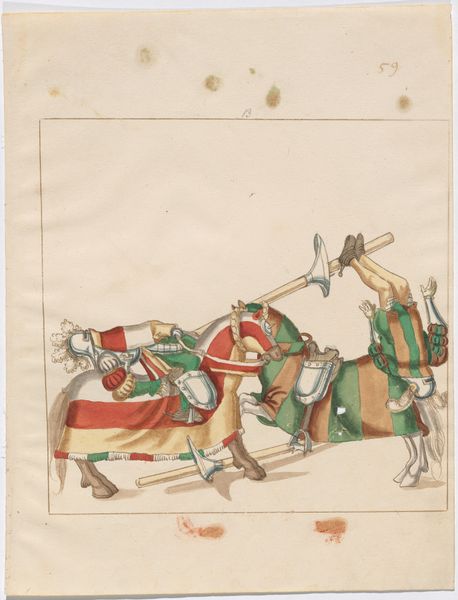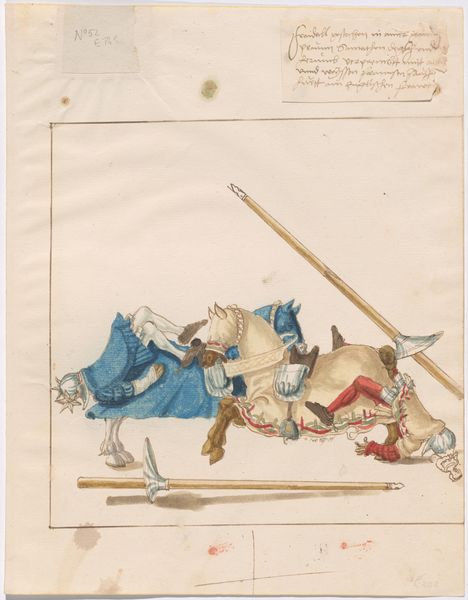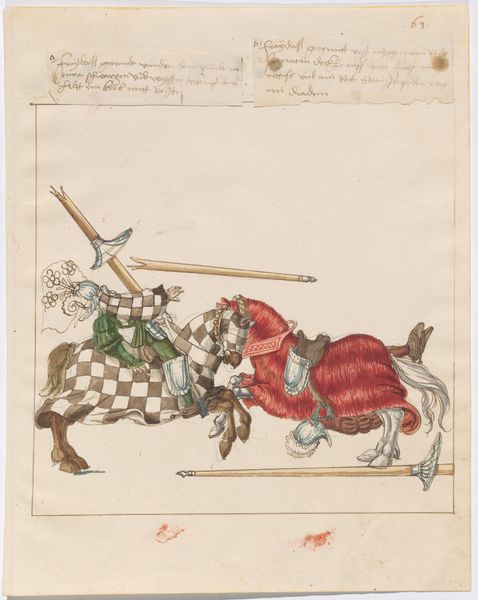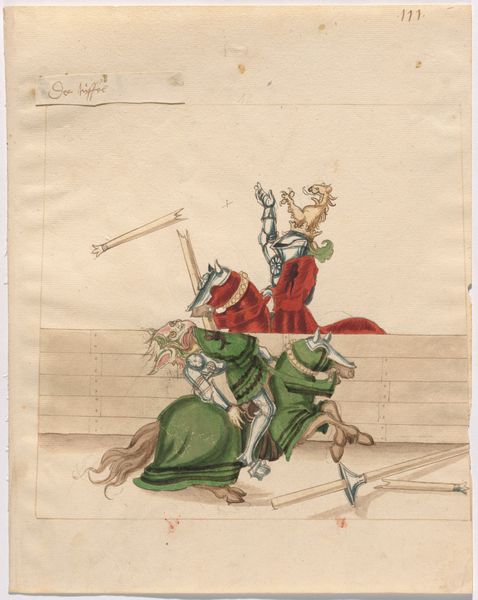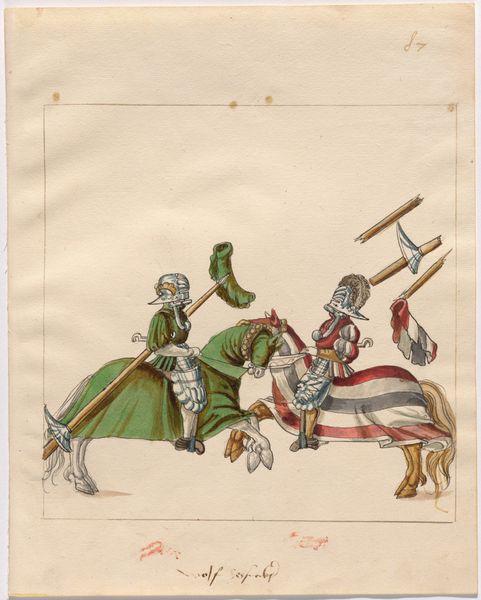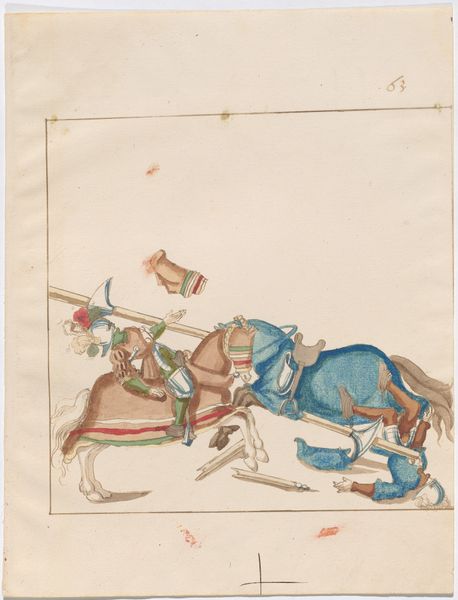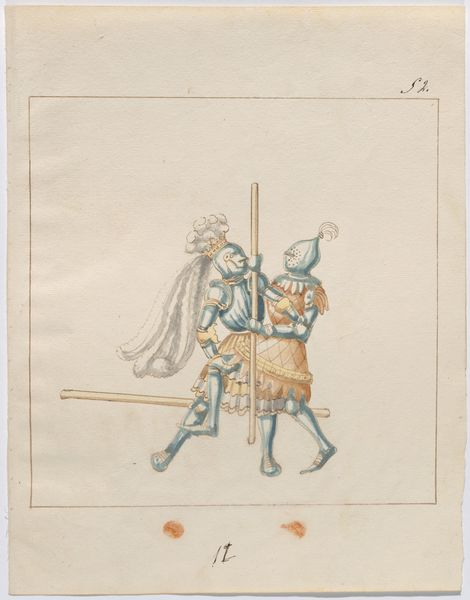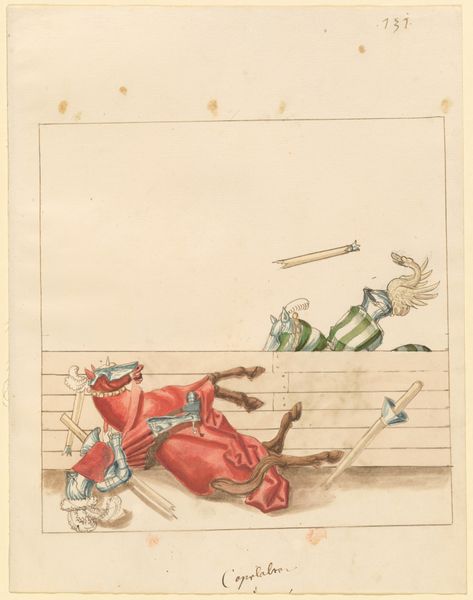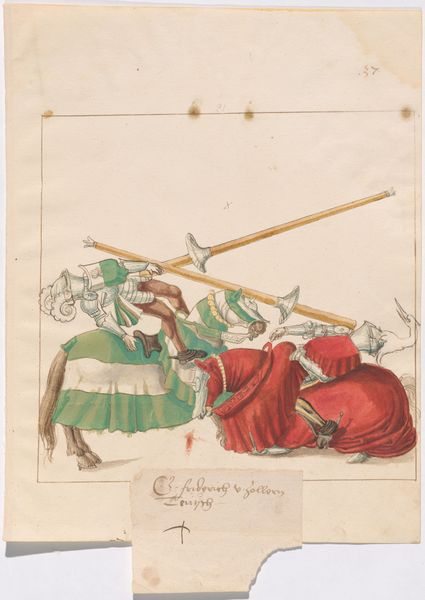
drawing
#
drawing
#
medieval
#
figuration
#
history-painting
#
italian-renaissance
#
watercolor
Dimensions: sheet: 33.5 × 26.2 cm (13 3/16 × 10 5/16 in.)
Copyright: National Gallery of Art: CC0 1.0
Curator: Let's turn our attention to this intriguing watercolor drawing, "Italian Joust of Peace," estimated to have been created sometime between 1512 and 1515 by an anonymous artist. Editor: My first thought is that this piece feels decidedly un-peaceful. The tumbling figure suggests a violent, albeit stylized, scene. There’s a stark contrast between the fallen green knight and the seemingly triumphant red one. Curator: Precisely! The social and political contexts of these tournaments are key to understanding the piece. Jousts like this, while often ceremonial, were displays of power and prestige among Italian city-states during the Renaissance. Victory reinforced not only individual valor, but the strength of the represented city or family. Think about the power dynamics encoded within that imagery. Editor: So, while on the surface, we see a sporting event, beneath it lies complex layers of identity, social standing and the theater of power? The color choices, too – the vibrancy of the red versus the vulnerability of the fallen green – feel heavily symbolic. Curator: Absolutely. The bright colors draw our eye and reinforce the performative nature of such events. The composition forces us to consider who gets to narrate history, whose perspective is elevated. We’re positioned, even today, as spectators within that spectacle. We can use the painting to question if, even back then, 'peace' was simply the absence of declared war rather than a true commitment to equity. Editor: And the anonymous authorship adds another layer. It allows us to see the joust as a cultural performance divorced from individual ego, representative of a larger system of social codes and hierarchies. But does the anonymity then shield those very structures from direct criticism or accountability? Curator: That’s the central tension. The painting acts as a record and potentially as a tool that normalizes a culture that relies on visible status. It compels viewers, even across centuries, to negotiate between pageantry and ethics. It makes you ask who funded the tournaments, how were their structures kept alive and how do the colors relate to family names and identities? Editor: This brief encounter has revealed a whole narrative tucked away within those simple lines. Curator: Exactly, transforming it from merely a depiction of a historical sporting event to a point of access and query to what power means, then and now.
Comments
No comments
Be the first to comment and join the conversation on the ultimate creative platform.
